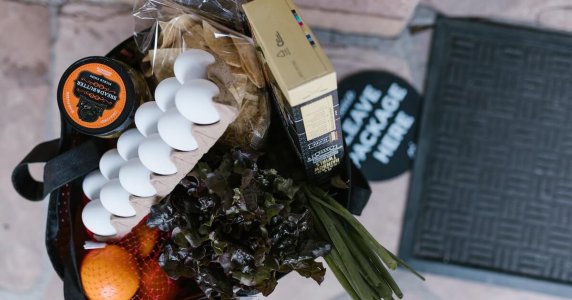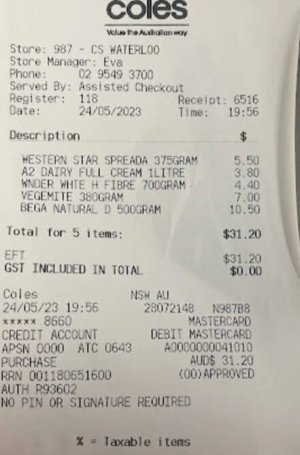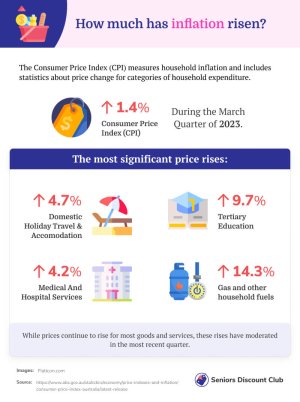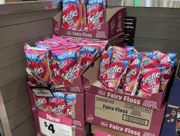This receipt reveals the harsh cost-of-living reality we're facing
- Replies 11
It's well known that the cost-of-living crisis in Australia is only getting worse. From soaring inflation to increasing rental prices, there are a number of factors that are causing everyday financial grief for many across the country.
And while we're aware that every time we go to the shops, we're likely to be confronted with higher prices, knowing what to expect doesn't really make it any easier to deal with.
And just how serious the cost-of-living crisis has become was recently highlighted by a single receipt that revealed a shocking total when buying basic products.
Many Aussies have toughened up in the face of skyrocketing living costs, with inflation at an alarming 7 per cent, RBA rates up at 3.85 per cent, and rental prices in some suburbs soaring by almost 50 per cent over the past year.
And a simple $31 receipt is a stark reminder of how dire the situation is and just how expensive basic necessities have become.
The $31 receipt contains some basic grocery items such as butter, milk, bread, vegemite, and cheese slices.
So, it comes as no surprise that many shoppers are opting to cut back on grocery staples to make their budgets last longer. Earlier this year, it was revealed that people have stopped buying certain fruits and vegetables to save more money for their next grocery shop. While others have started to skip out on meat.
According to reports, many have even avoided buying ‘common cuts’ because everything seems ‘pricey’ now. You can read more details here.
Buying groceries has become one of the most dreaded expenses, with 40 per cent of Aussies rating it as a highly stressful part of their budgeting, according to Finder.
Shockingly, 71 per cent of Australians have had to change their meal plans and eating habits to keep grocery bills at bay. For instance, 35 per cent have cut out meat and seafood to save money.
But have you ever wondered why pantry staples became so unaffordable?
Finder's Personal Finance Expert, Taylor Blackburn, shed light on the matter: ‘As the dollar loses value, it becomes more expensive to manufacture food, and those price hikes are then passed along to consumers.’
‘Millions of households are starting to feel the effects on their hip pocket with the latest quarterly figures from the ABS revealing food and alcoholic beverages have gone up by 8 per cent,’ he revealed – and Aussies are undoubtedly feeling the pinch.
It’s also crucial to note that while inflation is at 7 per cent, some grocery staples have increased in price beyond that.
Brodie Haupt, CEO and Co-Founder of digital lender WLTH stated that food and grocery prices at Coles and Woolworths have risen by an annualised 9.6 per cent. Meanwhile, essentials like dairy and meat have spiked by no less than 10 per cent.
But what about brand loyalty and our preferences?
In the face of the cost-of-living crisis, Canstar Blue Editor Christine Seib said that many shoppers had abandoned loyalty to specific brands. She added that Australians are cutting grocery costs by opting for lower-grade cuts of meat or only seasonal fruit and vegetables.
‘Our surveys show that about a third of buyers have switched from brand names to supermarket-branded products or go to multiple supermarkets for their weekly shop to nab the best bargains at each one,’ she proclaimed.
‘Basically, lots of people have already decided that brand loyalty doesn’t pay off, nor does sticking to your old favourite brands and types of groceries.’
Members, this just goes to show that it pays to be savvy with your money. Research prices, shop around for bargains, and try to switch to cheaper alternatives wherever possible. Don’t forget to shop in bulk and hit up those weekly specials.
If you need more money-saving tips, check out our forum here.

Do you have any tips for saving money in the supermarket? Tell us all about it in the comments below!
And while we're aware that every time we go to the shops, we're likely to be confronted with higher prices, knowing what to expect doesn't really make it any easier to deal with.
And just how serious the cost-of-living crisis has become was recently highlighted by a single receipt that revealed a shocking total when buying basic products.
Many Aussies have toughened up in the face of skyrocketing living costs, with inflation at an alarming 7 per cent, RBA rates up at 3.85 per cent, and rental prices in some suburbs soaring by almost 50 per cent over the past year.
And a simple $31 receipt is a stark reminder of how dire the situation is and just how expensive basic necessities have become.
The $31 receipt contains some basic grocery items such as butter, milk, bread, vegemite, and cheese slices.
So, it comes as no surprise that many shoppers are opting to cut back on grocery staples to make their budgets last longer. Earlier this year, it was revealed that people have stopped buying certain fruits and vegetables to save more money for their next grocery shop. While others have started to skip out on meat.
According to reports, many have even avoided buying ‘common cuts’ because everything seems ‘pricey’ now. You can read more details here.
Buying groceries has become one of the most dreaded expenses, with 40 per cent of Aussies rating it as a highly stressful part of their budgeting, according to Finder.
Shockingly, 71 per cent of Australians have had to change their meal plans and eating habits to keep grocery bills at bay. For instance, 35 per cent have cut out meat and seafood to save money.
But have you ever wondered why pantry staples became so unaffordable?
Finder's Personal Finance Expert, Taylor Blackburn, shed light on the matter: ‘As the dollar loses value, it becomes more expensive to manufacture food, and those price hikes are then passed along to consumers.’
‘Millions of households are starting to feel the effects on their hip pocket with the latest quarterly figures from the ABS revealing food and alcoholic beverages have gone up by 8 per cent,’ he revealed – and Aussies are undoubtedly feeling the pinch.
It’s also crucial to note that while inflation is at 7 per cent, some grocery staples have increased in price beyond that.
Brodie Haupt, CEO and Co-Founder of digital lender WLTH stated that food and grocery prices at Coles and Woolworths have risen by an annualised 9.6 per cent. Meanwhile, essentials like dairy and meat have spiked by no less than 10 per cent.
But what about brand loyalty and our preferences?
In the face of the cost-of-living crisis, Canstar Blue Editor Christine Seib said that many shoppers had abandoned loyalty to specific brands. She added that Australians are cutting grocery costs by opting for lower-grade cuts of meat or only seasonal fruit and vegetables.
‘Our surveys show that about a third of buyers have switched from brand names to supermarket-branded products or go to multiple supermarkets for their weekly shop to nab the best bargains at each one,’ she proclaimed.
‘Basically, lots of people have already decided that brand loyalty doesn’t pay off, nor does sticking to your old favourite brands and types of groceries.’
Members, this just goes to show that it pays to be savvy with your money. Research prices, shop around for bargains, and try to switch to cheaper alternatives wherever possible. Don’t forget to shop in bulk and hit up those weekly specials.
If you need more money-saving tips, check out our forum here.
Key Takeaways
- A receipt showcasing everyday Aussie basics has revealed the severity of the cost of living crisis.
- Inflation is at 7 per cent, RBA rates are at 3.85 per cent, and rental prices in some suburbs have increased by almost 50 per cent in a year.
- Finder found that 40 per cent of Australians rank groceries as one of their most stressful expenses, and 71 per cent have adapted their eating behaviour to try and keep their grocery bills down.
- Aussies are ditching brand loyalty and opting for cheaper alternatives or seasonal products to try and save on grocery costs.










